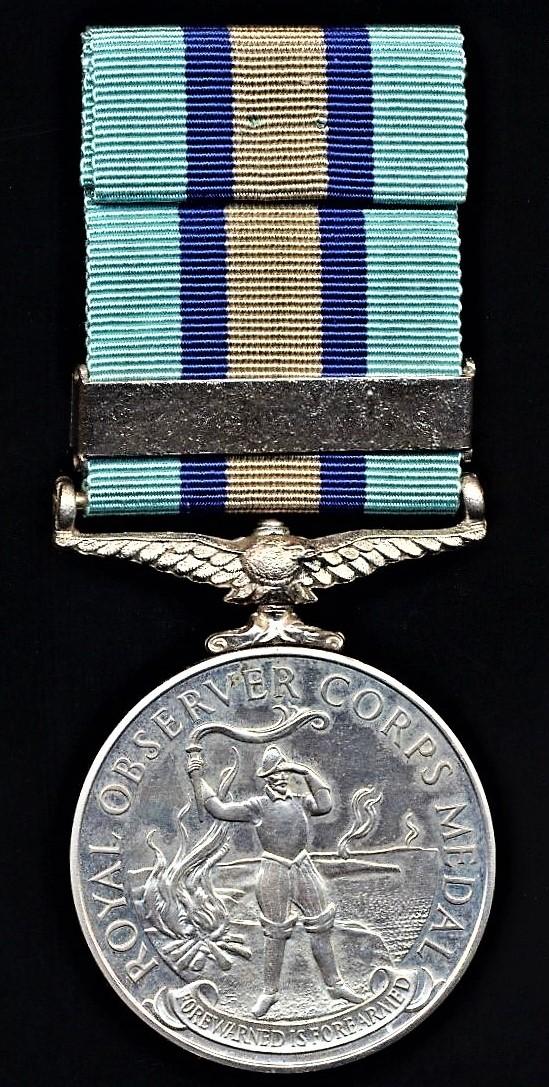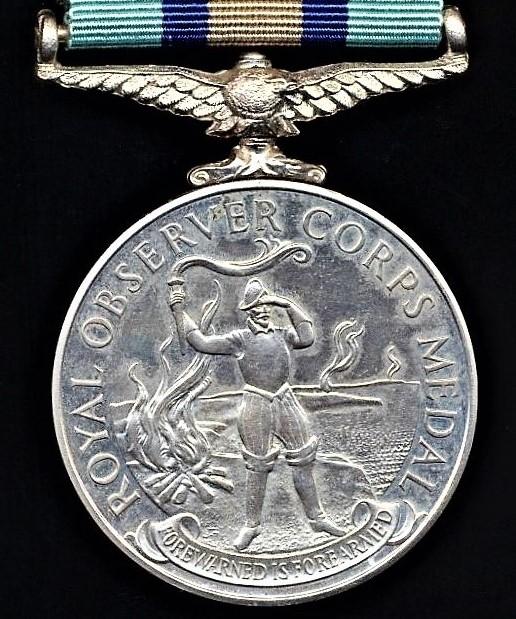Royal Observer Corps Medal. With further service bar (Observer L. Pimm.)
Observer L. Pimm was first awarded the long service medal while serving with No. 3 Group, during 1966 (after 12 years of service), and was being awarded the Long Service bar for a further 12 years additional service in, 1978
An estimated 14318 medals issued, of which 3042 x recipients would earn a further long service bar.
The Royal Observer Corps Medal was instituted by King George VI in 1950 (albeit no medals bearing the King's effigy were ever issued), and the first awards were made in 1953. The medal became obsolete in 1995, in which year the Royal Observer Corps was disbanded
Oxford was the Royal Observer Corps' No.3 Group HQ, in the UKWMO Metropolitan Sector. Oxford was the United Kingdom Warning and Monitoring Organisation (UKWMO) peacetime national headquarters, and was located in an office building adjacent to the No.3 Group bunker.
This is a list of the locations for former Royal Observer Corps (ROC) Group Headquarters and the United Kingdom Warning and Monitoring Organisation (UKWMO) sector controls that received information from ROC posts by dedicated GPO/BT landlines. Clusters of posts also had VHF radio communications with HQs and sector controls, in case of land-line failure, from the cluster Master Posts
.
The Royal Observer Corps was a civil defence organisation operating in the United Kingdom between 29 October 1925 and 31 December 1995, when the Corps' civilian volunteers were stood down. (ROC headquarters staff at RAF Bentley Priory stood down on 31 March 1996). Composed mainly of civilian spare-time volunteers, ROC personnel wore a Royal Air Force (RAF) style uniform and latterly came under the administrative control of RAF Strike Command and the operational control of the Home Office. Civilian volunteers were trained and administered by a small cadre of professional full-time officers under the command of the Commandant Royal Observer Corps; latterly a serving RAF Air Commodore
Condition: About EF
Code: 22971







